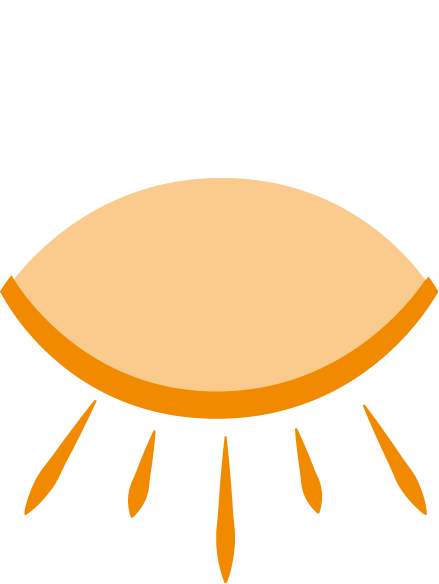
Education / The Bodhi Project / Fish
Fish in the Fishing Industry

Thousands of fish lie dead or dying on the ground amid workers packing them for transport. The fish are not stunned or slaughtered during harvests but simply removed from the water to eventually die while they are sorted for transport. Shatabdi Chakrabarti / FIAPO / We Animals
Content warning: The following images may be disturbing.
Click to reveal them and open your eyes. Photos credit: We Animals
The Fish Industry
Industrial fishing and fish farming are responsible for the painful deaths of trillions of sentient beings every year. An ample body of research has debunked outdated notions that fish do not feel pain, showing them instead to be sentient, social and sophisticated individuals, often with impressive memories and a rich emotional repertoire that ranges from playfulness and pleasure to trauma and terror.
The scale of the suffering in the fishing and fish-farming industries, and the ethical implications of our treatment of fish, are profound. In light of Buddhist ethical principles—which emphasize compassion, non-harming, and interconnectedness—it is crucial to understand the suffering that fish endure and reassess our relationship with them.
Click the eye to reveal


Live farmed sea bass fall from a brailer (dip net) as a worker transfers them from marine cages during a harvest. Workers fill this crane-suspended net with fish from the rearing cage, guide it to waiting transport boxes, and then drop the fish inside. Trabzon, Trabzon Province, Black Sea Region, Turkiye, 2023. Havva Zorlu / We Animals
The Industrial Fishing Industry: Contributing to Immense Suffering
Industrial fishing kills over 2.7 trillion fish each year for human consumption, according to the Food and Agriculture Organization of the United Nations (FAO), and many more are killed unintentionally as discarded ‘bycatch’. This causes suffering on a scale that is almost impossible for the human mind to grasp.
Click the eye to reveal


A dead Atlantic salmon, their face appearing to look up from beneath the water's surface, floats inside a salmon farm sea cage. Scotland, United Kingdom, 2023. Ed Shephard / We Animals
Fish in industrial fisheries endure tremendous physical and psychological trauma that few people would tolerate vis-a-vis mammals or birds, despite the evidence that fish are no less able to experience pain and distress.
Fish are subjected to severe physical injury from being caught by nets or hooks. Many suffocate as they struggle to breathe while still trapped. All will eventually suffocate after being hauled to the surface—unless they first die of organ rupture due to depressurisation, are crushed by the weight of other fish, are deliberately frozen to death, or are gutted alive. This often causes severe injury and intense suffering before death.
Click the eye to reveal


A fish with a bloodied eye lies in a container at a wholesale fish auction market. Harvested fish are not slaughtered before reaching the market, often remaining alive for hours. At the market, the photojournalist witnessed them struggling and writhing in crates, weight scales, and other containers. Many exhibit bodily injuries such as cuts, missing scales, damaged eyes or other signs of trauma from rough handling. Akividu Wholesale Fish Market, Eluru, Andhra Pradesh, India, 2023. Shatabdi Chakrabarti / FIAPO / We Animals
One other deeply unethical element of industrial fishing is bycatch—the unintended capture of non-target species. These casualties include not only other fish, but also dolphins, turtles, and seabirds.
The FAO estimates that as much as 40% of global marine catch is bycatch, resulting in the needless deaths of billions of other animals. Many are thrown back into the sea severely injured or already dead.
Once caught, fish often suffer prolonged deaths. Many are gutted while still alive, with organs removed while the fish are still conscious, causing tremendous pain. In other cases, they are subjected to slaughter methods such as asphyxiation or physical mutilation. Unlike the mammals that are killed for food, fish are not generally stunned to make them unconscious before they are killed.
Click the eye to reveal


Photo credit: Andrea Diaz
Fish Farming: Suffering Behind Closed Walls
Fish farming is one of the fastest-growing sectors of animal agriculture. It’s estimated that more than half of the fish consumed worldwide are now farmed. Conditions in these farms are often even more inhumane than in the wild-capture industry.
Farmed fish are typically confined to overcrowded enclosures or net pens, where they are unable to swim freely or engage in natural behaviors. These crowded conditions cause a range of health problems, including stress-related diseases, parasite infestations and injuries. Salmon, for instance, are often kept in pens where 100,000 to 200,000 fish are packed into a small area. This overcrowding leads to skin lesions, fin damage, and increased susceptibility to diseases. Farmed fish also exhibit signs of stress such as abnormal swimming patterns, aggression, and even cannibalism, driven by their inability to escape the cramped and unnatural conditions.
Aerial view of the Ronja Huon, a wellboat (fish carrier) belonging to Huon, Australia’s second largest salmon producer, suctions fish from a sea cage. Onboard the fish are stunned, bled out, then transported to onshore facilities for further processing. Tasmania, Australia, 2017. Bear Witness Australia / We Animals
Farmed salmon are often fed a diet designed to accelerate growth, which can cause metabolic issues and lead to digestive problems. At the end of their short lives (typically 18–24 months), these fish are slaughtered using methods such as slashing their gills, electrocution, or asphyxiation—all of which cause intense pain.
In Norway alone, over 1.3 billion farmed salmon are slaughtered each year—almost as many as the number of pigs slaughtered across the entire world.
Click the eye to reveal


Photo credit: Andrea Diaz
Scientific Research: Fish Sentience and the Ability to Feel Pain
Research over the past few decades has dramatically expanded our understanding of fish sentience. Studies have shown that fish, like other vertebrates, possess pain receptors and have the neurobiological machinery to process pain signals in their brains. This confirms that fish experience pain in a manner similar to mammals, birds, and other vertebrates.
A groundbreaking study published in the Journal of Experimental Biology in 2003 found that rainbow trout exposed to noxious chemicals displayed strong signs of pain, including rubbing the affected area and changing their behavior to avoid further harm. The most up-to-date research shows that fish are capable of anticipating pain, forming memories of painful experiences, and avoiding situations that cause them harm. This capacity for emotional response means that fish, like humans and other animals, experience psychological suffering as well as physical pain.
Click the eye to reveal


A temporary enclosure made from transport crates holds thousands of deeply piled fish harvested from an adjacent pond at a fish farm. The fish are not stunned or slaughtered during harvests but simply removed from the water and left to die from lack of oxygen. From here the fish are sorted, weighed and packed for transportation. This farm raises catla (katla) and rohu. Andhra Pradesh, India, 2023. Shatabdi Chakrabarti / FIAPO / We Animals
Other Marine Animals
In addition to fish, the industrial fishing industry and aquaculture also kill other marine animals, including octopuses, crabs, shrimp, and lobsters. These creatures are often subjected to cruel and inhumane treatment, both in the wild and in captivity.
Octopuses are known to possess intelligence and problem-solving abilities that in some areas approach those of humans, yet they are often caught and confined in conditions that severely restrict their natural behaviors. In aquaculture, octopuses are typically kept in crowded tanks, where they can suffer from extreme stress, aggression, and physical injuries.
Crabs and lobsters are often caught in traps or nets, where they are left to struggle for extended periods before being hauled aboard ships. These animals are then frequently boiled alive without any consideration for their capacity to experience pain.
Shrimp farming comes with its own set of ethical concerns, as shrimp are often subjected to overcrowded, unsanitary conditions, leading to disease and death, while also being subjected to painful harvesting methods. Like fish, these animals are now recognized as capable of experiencing pain and distress, prompting a reassessment of their treatment.
Click the eye to reveal


A ray lies dead or dying amid numerous dead fish on a commercial fishing boat after workers had sorted through them from the tons caught earlier that morning. Undesired "bycatch" species, fish damaged from the fishing process, or those not holding the desired characteristics for sale are left to suffocate and die on the boat deck and be discarded into the sea. Trabzon, Trabzon Province, Black Sea Region, Turkiye, 2023. Havva Zorlu / We Animals

Buddhist Ethical Framework:
Compassion and Non-Harming
Buddhism encourages us to extend compassion (karuna) to all living beings and to recognize the interconnectedness of all life. The suffering of fish in the industrial fishing and aquaculture industries stands in stark contrast to the Buddhist values of ahimsa (non-harming) and compassionate living.
Fish are sentient beings deserving of our respect and consideration. In line with the First Precept (refraining from causing harm), it is important to understand the physical and emotional suffering that fish endure in these industries. As the Buddha taught, we must act in ways that alleviate suffering and avoid causing harm. An up-to-date understanding of fish sentience reinforces the urgency of rethinking our practices.
The practice of Right Livelihood (Samma Ajiva) calls for us to avoid professions or industries that cause harm. The fishing and fish farming industries employ people to inflict harm, and enable this harm to sentient beings to be done on our behalf. By choosing plant-based foods instead of fish and other animal products, we enable people to work in industries that allow them to pursue Right Livelihood instead, and we save and protect the lives of countless sentient beings from the suffering and deadly fate of these industries.
Conclusion: The Immensity of the Problem and Ethical Responsibility
With over 2.7 trillion fish caught each year and billions of others suffering in fish farms, the scale of the problem is immense. The practices in these industries inflict untold pain and distress on sentient beings whose suffering is often more easily overlooked than that of animals that live on land. Scientific research continues to show that fish are capable of experiencing both physical pain and emotional suffering, demanding that we reconsider how we treat them.
By cultivating compassion and mindfulness, we can make ethical choices that alleviate the suffering of fish and other animals. The Buddhist teachings on interconnectedness and non-harming remind us that our actions have far-reaching consequences. Making mindful choices in what we consume aligns our actions with the deep compassion that is at the heart of Buddhist ethics.








